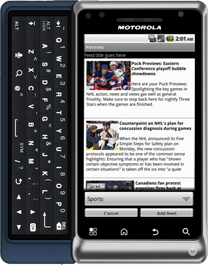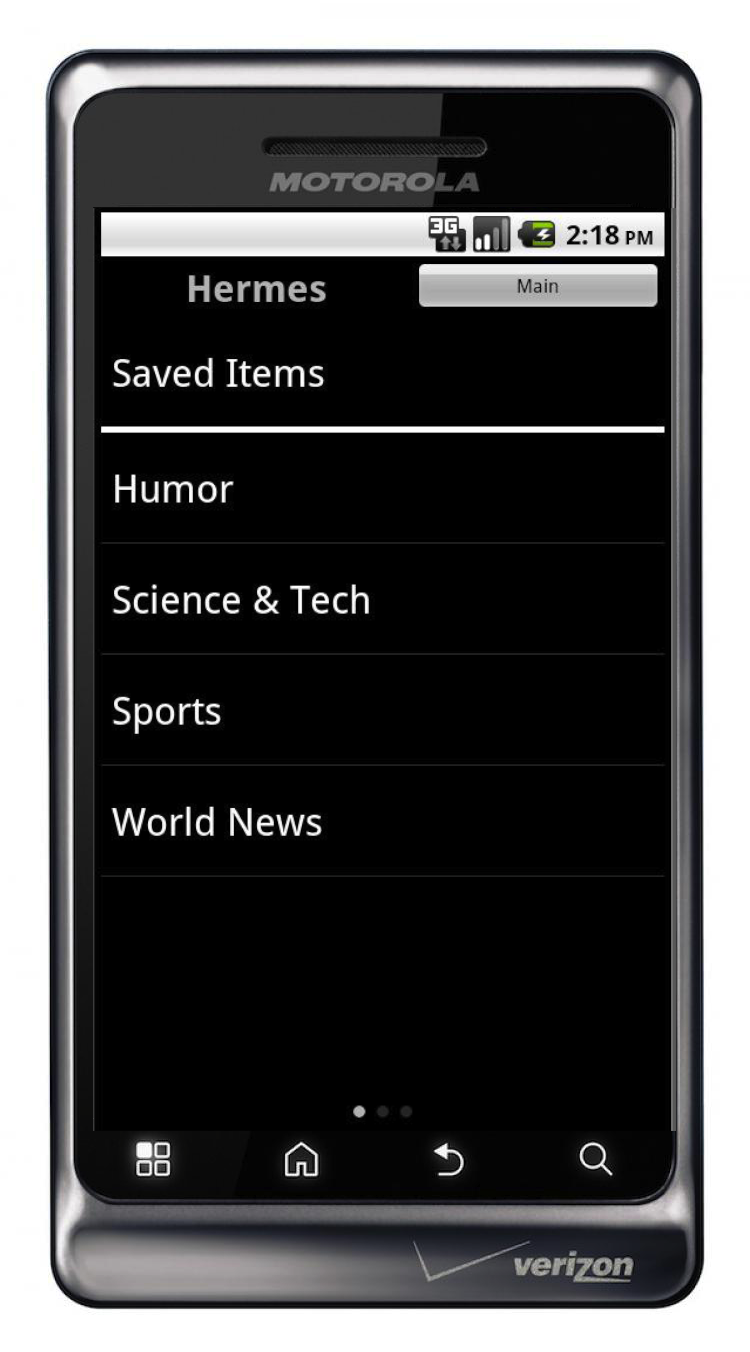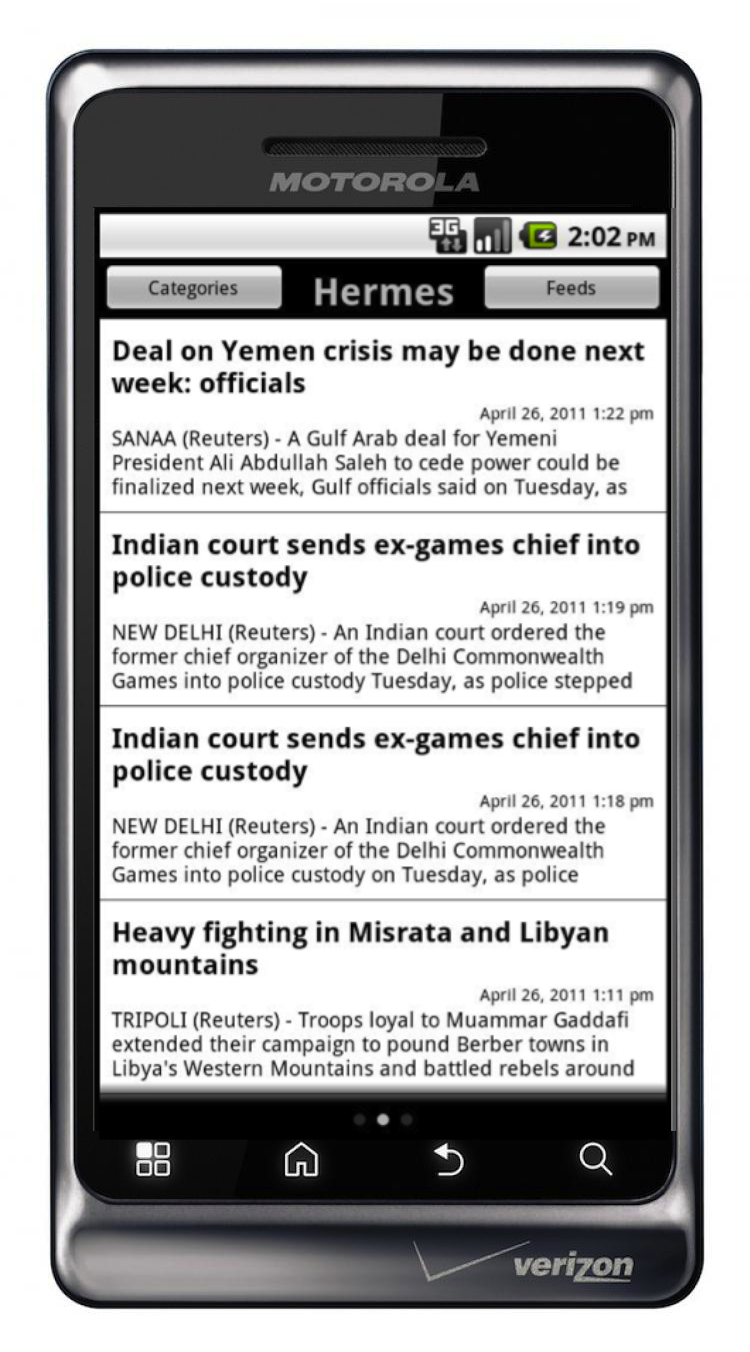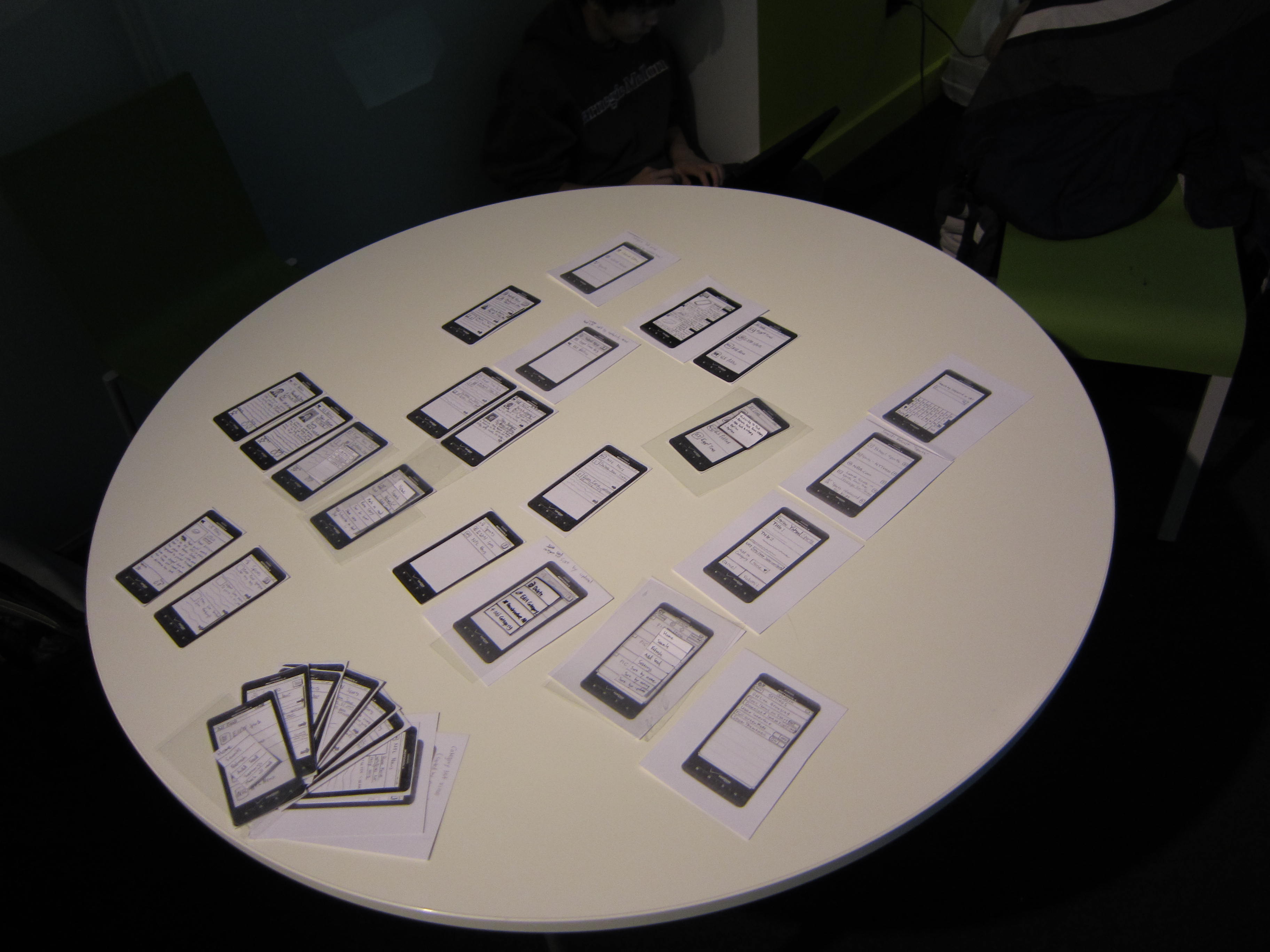Hermes

Project Overview:
Hermes attempts to change the way users consume RSS feed content by enabling them to view stories more than one source at a time, as well as providing news from sources that the users has not previously encountered. This allows users to gain more perspective on topics they've already expressed an interest in. By personalizing to the interests and story ratings of each user, users will not only get more desirable content out of Hermes, but also will begin to feel an emotional investment. That is to say that as users spend time rating stories, they begin to feel connected to the personalization, getting a sense that the app "knows" what they like. By getting users invested in reading, Hermes increases time spent using the application for browsing, rather than only using it to check RSS updates of followed feeds and blogs.
Design Overview:
Hermes’s primary goal, based on our user research detailed below, was to provide quickly provide users with meaningful content. We accomplished this in two primary ways: first, by making the story the focus of the application, rather than the feed that it came from, and secondly, by rating and ranking stories algorithmically to determine what stories a user would enjoy.
In most RSS readers, it takes at least two presses or clicks until content is shown. In Hermes, article previews are among the first things you see on the main page, and the full stories are just one click away.
Our basic structure consisted of three screens: A main screen displaying stories picked for the user based on how likely a user was to enjoy them, a category screen that organized news by broad categories, and a feeds screen that organized news by its source. The screens were layed out as though they were physically next to each other, with the main screen in the middle, allowing users to swipe between them.



User Research
Hermes was an exercise in iterative, user-centered design for Anind Dey’s Spring 2011 course Designing Human-Centered Software. We began by performing contextual inquiries about how people consume media on their phones, asking them questions and observing them as they used their preferring method of acquiring news. We found that expert users of RSS feed readers were concerned about information overload: they believed they were missing good stories buried in the mass of feeds they subscribed too. One user had the habit of opening his phone, scrolling to the oldest item first, then reading upwards, all to ensure that he didn’t overlook a good story.
From these interviews, we made a list of the three tasks we deemed most important in an RSS reader:
- Access a recent story relevant to user interests
- Rate/Share/Comment on a story based on its content and interest to the user
- Create categories or folders for organizing groups of news sources
With these tasks in mind, we created a paper prototype on cardstock, which we took into the field and conducted basic task-oriented user testing.

We then refined the results from our mockup into a low-fidelity prototype on the Android system, which we used to conduct a series of heuristics tests.
From that set of tests, we developed a final iteration of the application.
Further Reading:
As Hermes was a semester-long academic project, we wrote a few papers and did several presentations. Feel free to read any of the papers below.
Project Proposal
Heuristics Evaluation of Intermediate Prototype
Collaborators: Joman Chu, Nurlan Karimzhan, Elina Yeji Kim, Prakash Mallela